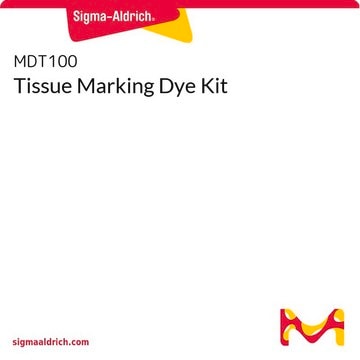442658-U
Methylene di-p-phenyl diisocyante
analytical standard
Sign Into View Organizational & Contract Pricing
All Photos(1)
About This Item
Recommended Products
grade
analytical standard
packaging
ampule of 1000 mg
technique(s)
HPLC: suitable
gas chromatography (GC): suitable
application(s)
environmental
format
neat
storage temp.
2-8°C
InChI
1S/C15H10N2O2/c18-10-16-14-5-1-12(2-6-14)9-13-3-7-15(8-4-13)17-11-19/h1-8H,9H2
InChI key
UPMLOUAZCHDJJD-UHFFFAOYSA-N
Application
Refer to the product′s Certificate of Analysis for more information on a suitable instrument technique. Contact Technical Service for further support.
Signal Word
Danger
Hazard Statements
Precautionary Statements
Hazard Classifications
Acute Tox. 4 Inhalation - Carc. 2 - Eye Irrit. 2 - Resp. Sens. 1 - Skin Irrit. 2 - Skin Sens. 1 - STOT RE 2 Inhalation - STOT SE 3
Target Organs
Respiratory system
Storage Class Code
11 - Combustible Solids
WGK
WGK 1
Flash Point(F)
411.8 °F - closed cup
Flash Point(C)
211 °C - closed cup
Personal Protective Equipment
dust mask type N95 (US), Eyeshields, Gloves
Choose from one of the most recent versions:
Already Own This Product?
Find documentation for the products that you have recently purchased in the Document Library.
Unique foreign body ingestions in the pediatric population.
Sheila Isabelle Goertemoeller et al.
Journal of emergency nursing: JEN : official publication of the Emergency Department Nurses Association, 36(2), 178-179 (2010-03-10)
H D Hoffmann et al.
Toxicology letters, 199(3), 364-371 (2010-10-12)
Polyurethanes (PU) are polymers made with diisocyanates such as MDI (4,4'-methylene diphenyl diisocyanate) and TDI (2,4-toluene diisocyanate and 2,6-toluene diisocyanate). Investigations have been undertaken with MDI and TDI to assess dermal uptake and resulting systemic exposure. Absorption, distribution and excretion
Hanna K Lindberg et al.
Mutation research, 723(1), 1-10 (2011-04-02)
Toluene diisocyanate (TDI) and 4,4'-methylenediphenyl diisocyanate (MDI), used in the production of polyurethane foam, are well known for their irritating and sensitizing properties. Contradictory results have been obtained on their genotoxicity. We investigated the genotoxicity and protein binding of inhaled
Dominika Swierczyńska-Machura et al.
Medycyna pracy, 62(6), 567-577 (2012-02-09)
The aim of the study was to analyze the data obtained during the diagnostic process and their real values in the final diagnosis of patients exposed to diisocyanates amd suspected of occupational allergic disease of the respiratory system The patients
Anoop Kumar et al.
Chemical research in toxicology, 22(12), 1975-1983 (2009-11-26)
4,4'-Methylenediphenyl diisocyanate (MDI) is the most important of the isocyanates used as intermediates in the chemical industry. Among the main types of damage after exposure to low levels of MDI are lung sensitization and asthma. Albumin adducts of MDI might
Our team of scientists has experience in all areas of research including Life Science, Material Science, Chemical Synthesis, Chromatography, Analytical and many others.
Contact Technical Service








